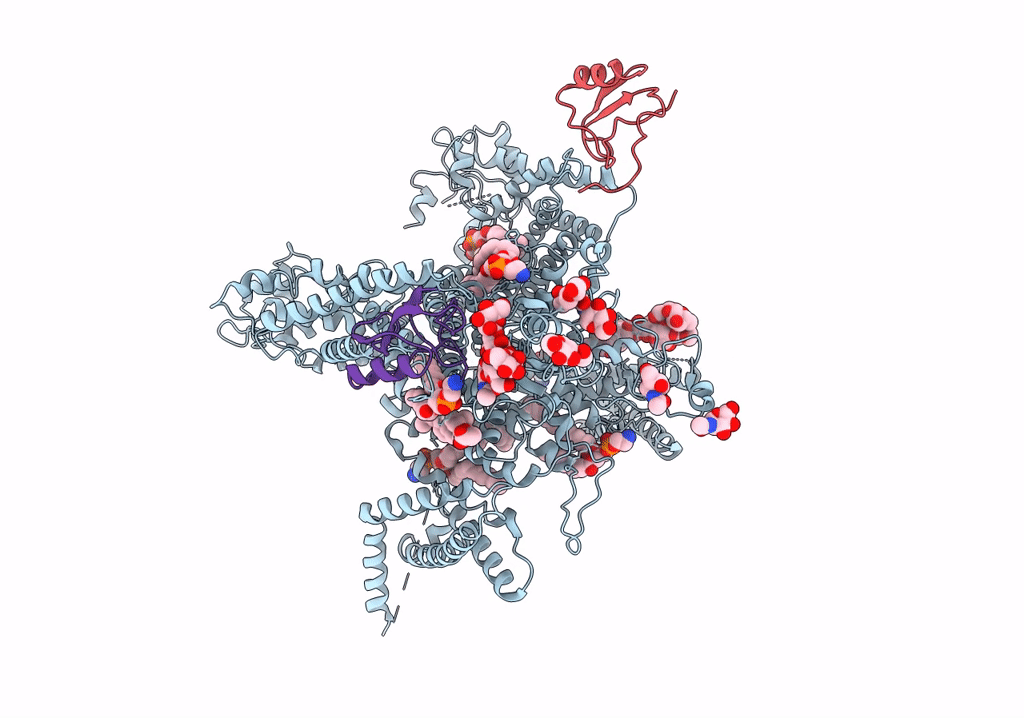
Deposition Date
2019-01-28
Release Date
2019-02-20
Last Version Date
2025-05-28
Entry Detail
PDB ID:
6NT4
Keywords:
Title:
Cryo-EM structure of a human-cockroach hybrid Nav channel bound to alpha-scorpion toxin AaH2.
Biological Source:
Source Organism:
Periplaneta americana (Taxon ID: 6978)
Homo sapiens (Taxon ID: 9606)
Androctonus australis (Taxon ID: 6858)
Homo sapiens (Taxon ID: 9606)
Androctonus australis (Taxon ID: 6858)
Host Organism:
Method Details:
Experimental Method:
Resolution:
3.50 Å
Aggregation State:
PARTICLE
Reconstruction Method:
SINGLE PARTICLE


